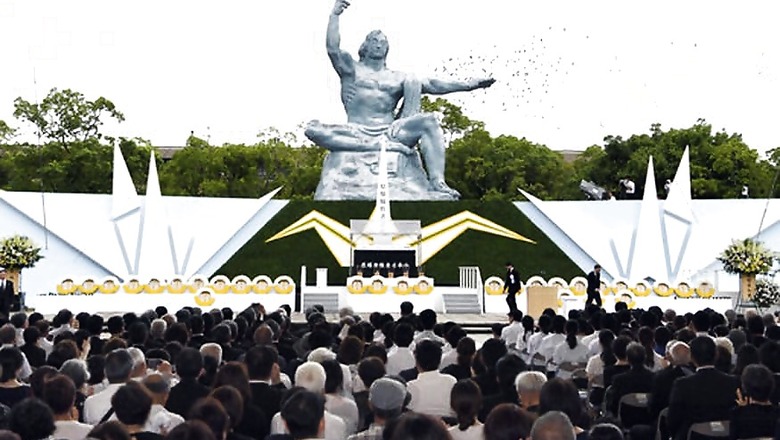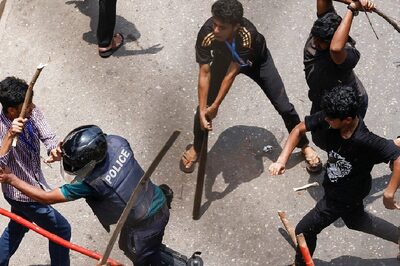
views
Three days after dropping an atomic bomb on Hiroshima, the United States on August 9, 1945 dropped another one on Nagasaki, Japan. It was codenamed "Fat Man" due to the design of the bomb as it had a wide, round shape.
The atomic bombing of Nagasaki and Hiroshima forced Japan to surrender, thus ending World War II. Nagasaki and Hiroshima continue to feel the impact of the destructive bombing even today.
On the 74th anniversary of the Nagasaki bombing, here's everything you need to know:
Initially, there were five Japanese cities on the US’s initial hit list. Nagasaki was not one of them. The list included Kokura, Hiroshima, Yokohama, Niigata and Kyoto. It’s said that Kyoto was spared because US Secretary of War Henry Stimson was fond of the ancient Japanese capital.
The bomb detonated at 11:02 am on August 9, 1945. Residents thought it hit the ground and exploded, but it actually detonated mid-air above the city, making the impact more severe.
Codenamed 'Fat Man', the weapon weighed nearly 10,000 pounds, was around 11 feet long, and had the capacity of 20,000 tons of explosive.
The plane that carried the atomic bomb was a B-29 Superfortress, one of the most commonly produced aircrafts in the World War II. The plane was named Bockscar.
An area of about 5 square miles was completely obliterated and around 65,000 people were killed in the bombing.
Although the bomb was more powerful than the one used on Hiroshima, its effects were confined by hillsides to the narrow Urakami Valley. Incidentally, the most destructive World War Two bombing attack on Japan was neither Hiroshima nor Nagasaki but the US bombing of Tokyo on March 9, 1945. It left more than 100,000 people dead and several times the number injured.




















Comments
0 comment